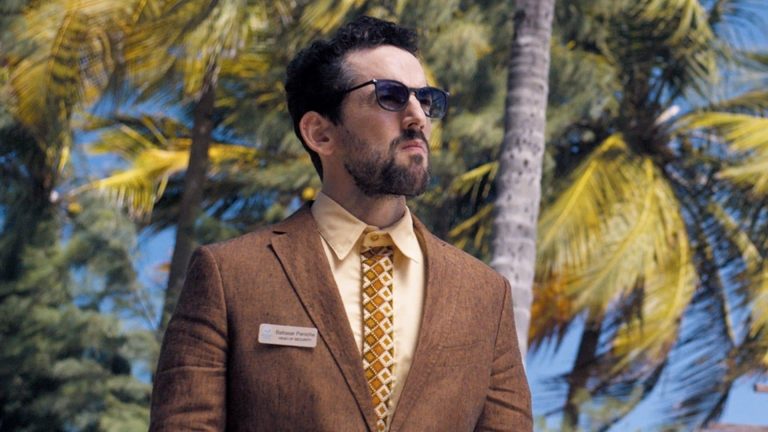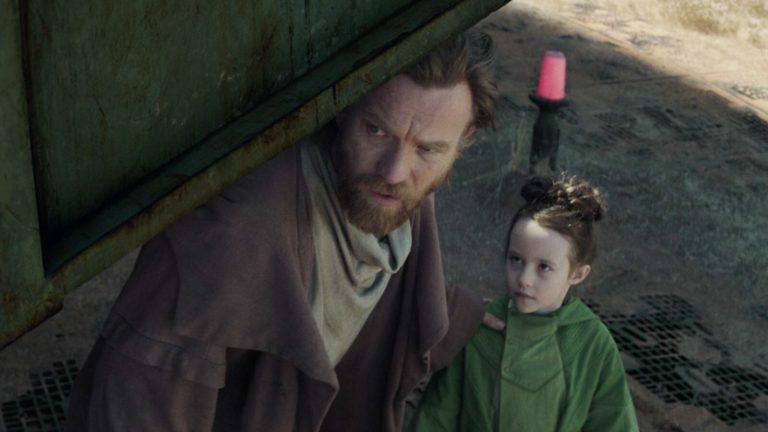In an era where every once-maligned, auteur-driven project from the 2000s is being reassessed as an underrated gem by the most generous corners of the internet, it would be difficult to categorize M. Night Shyamalan’s current trajectory as a “comeback.” This designation becomes even more complicated when considering that the sort of films composing this post-After Earth resurgence—Split, Old, Knock at the Cabin—are so wildly uneven that this supposed upward course is more akin to Twitter’s monthly stock price.
Not only are the films that Shyamalan is now making incredibly difficult to embrace as a wider oeuvre, but this frustrating unevenness even manifests itself within individual films. It’s for that painful reason that “Trap,” a film of such initially airtight composition, gracelessly falls apart the longer the notorious filmmaker chooses to twist that garrotte around the audience’s necks.
The premise, so simple and effective in theory, follows the almost real-time journey of Cooper Adams (Josh Hartnett), a father taking his daughter Riley (Ariel Donoghue) to a concert by her favorite singer, Lady Raven (Saleka Shyamalan, cashing in on her old man’s genuine love for showing off his kids). As Cooper notices the overwhelming police force swarming the stadium, he learns that the entire endeavor is actually a sting operation—a trap, if you will—to capture the deadly serial killer The Butcher, whose presence at the concert has been tipped off to the fuzz.
That Cooper himself is actually The Butcher, suddenly forced into defense mode as he scrambles to escape this gigantic mouse trap, would normally compose the ever-famous plot twist of one of Shyamalan’s films, but “Trap” opts to reveal that information before the whole police operation is even made known. The director, then, instead opts towards a more crafts-oriented approach that makes surprisingly potent use of his tight grasp of visual language, making for one of the more consistently thrilling efforts in Shyamalan’s filmography.
That is… until it isn’t.

“Trap” makes an excellent case for Shyamalan’s virtues as a visually oriented filmmaker. Sayombu Mukdeeprom’s almost Hitchcockian shot compositions effectively communicate the gears turning in this psychopath’s brain as he plots his seemingly hopeless escape. That said, when it’s all said and done, the director simply can’t help but fall back on his favorite mantra: tell, don’t show, and with as excruciatingly cringe-worthy dialogue as possible.
Perhaps the most solid two-thirds of a thriller to be released this year, “Trap,” unequivocally proves Shyamalan’s worth as an optic storyteller while simultaneously undermining that talent by exposing his unparalleled inability to get into the human brain. This wouldn’t be an issue if he focused exclusively on the survivalist elements of his initially simple premise, extracting every ounce of claustrophobia and resourcefulness at his lead’s disposal. But as it enters what feels like its eighth act in the final 30 minutes, “Trap” decides to roll out its painfully underwritten psychoanalysis in spite of how much it actively deflates the tension.
If there’s one thing that “Trap” proves as a continued strength of the Shyamalan-naissance, it’s the director’s taste in leading actors, actively propping up the shoddy material despite—or perhaps because of—his noted shakiness in developing convincing characters. (Recent finds Vicky Krieps and Dave Bautista prove that Shyamalan still has an eye for awkward line deliveries that enhance the broken states of his characters, rather than entirely distracting from them.)
Given the constant masking that defines Cooper’s character, Hartnett’s slightly unhinged line delivery makes for an effective demonstration of the discomfort you’re supposed to feel for wanting to see a man who dismembers unsuspecting civilians for kicks escape justice. His crooked smile may leave us dying of laughter, but that effect only somehow manages to elevate the emotional strain just waiting to snap.
When “Trap” finally decides to unleash that tension and leave its confined concert setting, M. Night Shyamalan simply spends way too much time coming down from his own high to effectively communicate a similarly tense euphoria to the audience. He does, of course, fill that final act with its fair share of peaks and dips—including, of course, the expected twist—but the degree to which these developments vary in quality is so vast and exhausting that “Trap” almost functions as a microcosm of Shyamalan’s entire career. With the potential to be such a taut, focused feature from a director in desperate need of that stability, “Trap” instead loses its way in steep yet tragically prolonged fashion, forever enslaved in the muddled mind of its own dizzy designer.








![For Your Consideration: Gerry [2002]](https://79468c92.delivery.rocketcdn.me/wp-content/uploads/2017/04/Gerry-768x355.jpg)
